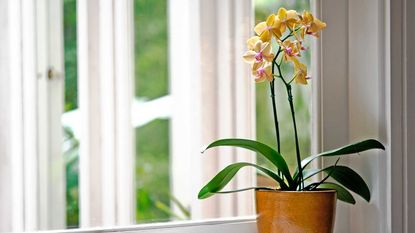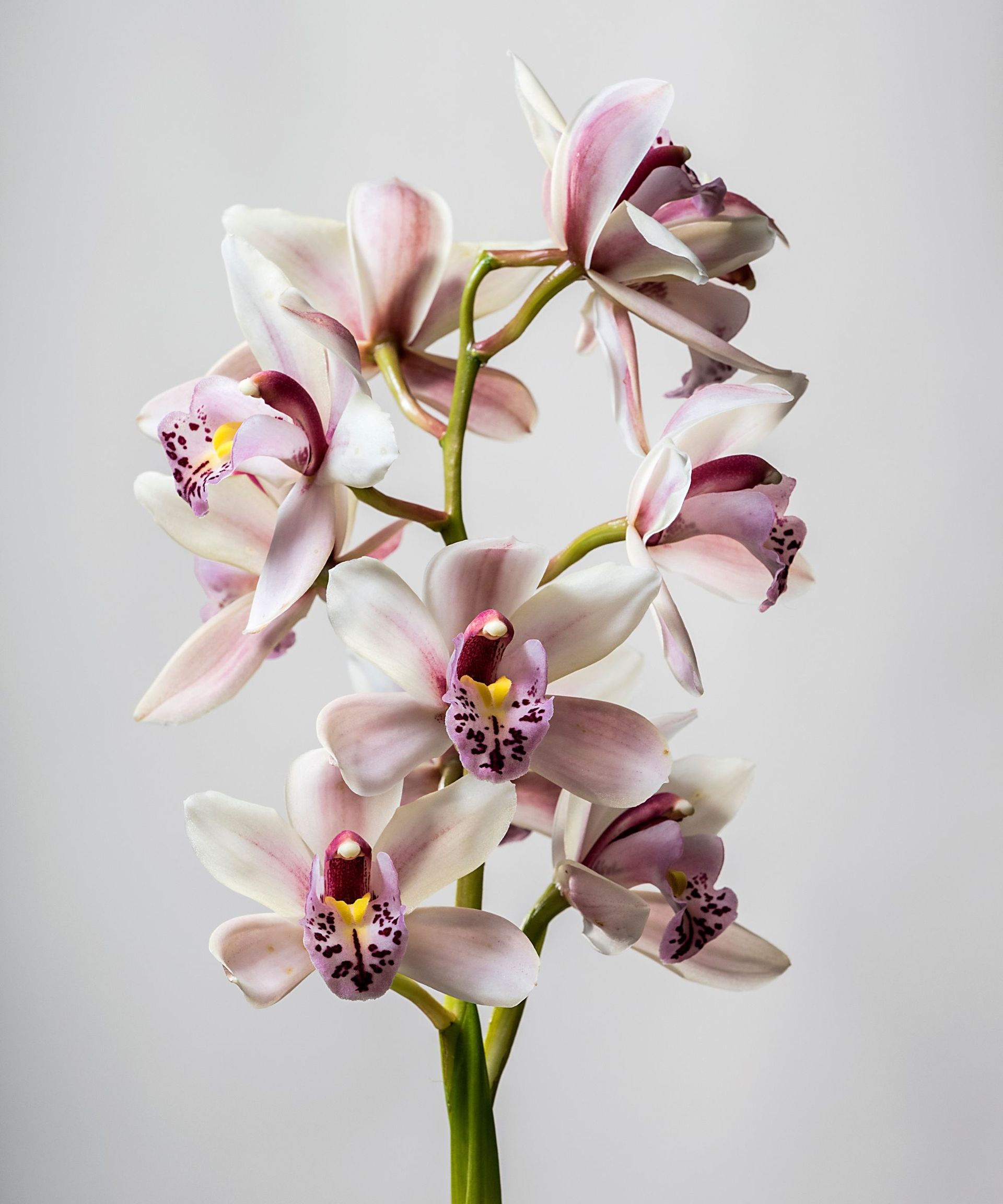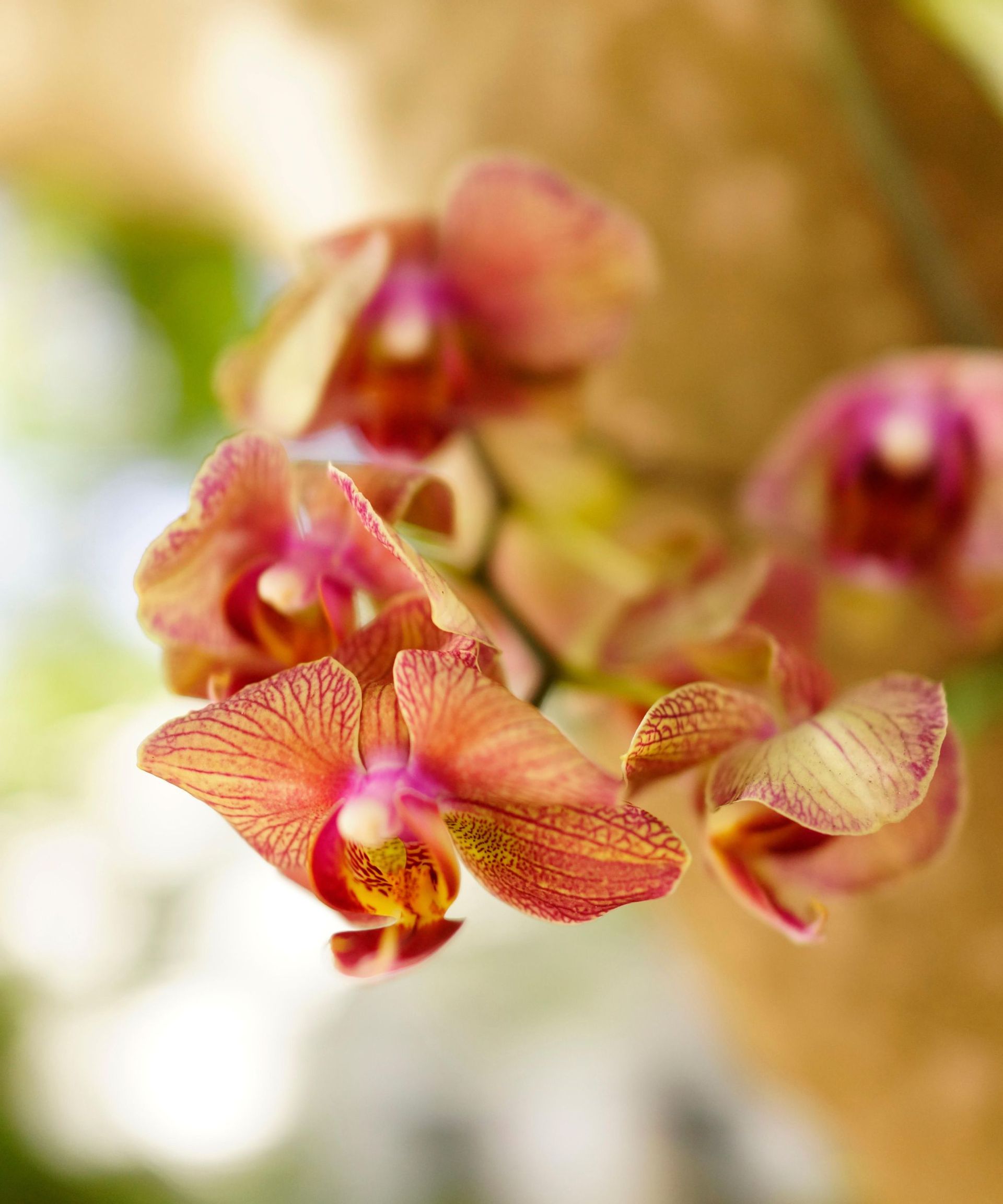Why is my orchid wilting? 4 possible reasons and solutions
Unsure why your orchid is wilting? Find out the causes and what action to take to revive your plant
- (opens in new tab)
- (opens in new tab)
- (opens in new tab)
- Sign up to our newsletter Newsletter


It can be so disheartening for a keen houseplant grower to witness an orchid wilting. With their distinctive, colorful blooms available in myriad hues, orchids are, quite justifiably, one of the most beautiful plants to include among your indoor greenery, and it can be all too easy to suspect you have failed in caring for them adequately when they start to wilt.
Hands up who has thrown away an orchid plant, assuming it is dead after the flowers have dropped off leaving a solitary stem with a few leaves? If you have, you're not alone. But next time hang on to it.
There are a number of possible reasons for an orchid wilting, and you'll be glad to hear that action can be taken where necessary to revive and bring the plant back to health. It's easy to master the basics of orchid care, and with a little extra attention, your orchid will soon regain its crown among your other indoor flowering plants.

4 key reasons why your orchid is wilting
If you have noticed your orchid wilting, first identify whether it is the flowers or the leaves that are wilting. 'One is normal, and the other is a bit more serious,' explains Art Chadwick of Chadwick & Son Orchids Inc (opens in new tab) of Powhatan, Virginia.
The reason might be part of the plant's natural life cycle, or it might be a sign that the plant is unhappy with its conditions – the same is true if you notice your orchid stem turning yellow.

Art founded Chadwick & Son Orchids Inc in 1989 with his father, who had been growing orchids since 1943. Chadwick & Son operates 11 greenhouses in rural Powhatan County, two retail stores in Richmond, and boards over 13,000 orchids for local clients. Art is a regular expert on the Orchid Society speaker's circuit and has spoken at two World Orchid Conferences. For 20 years, he wrote a monthly orchid advice column that was carried by newspapers around the country. He is a font of knowledge on orchid growing and care.
1. Orchid flowers wilting when finished blooming
'Orchid flowers wilting is usually just because the plant has finished blooming and may or may not be accompanied by a yellow stem. The blooms are finished for the year and will return next year – seasonally from January to April,' explains Art Chadwick.
This is particularly the case for sympodial orchids, such as cattleya, cymbidium, or paphiopedilum.
'If it's a sympodial orchid, it's normal for the older growth to wilt and eventually dry up as the plant continues to grow, get bigger, and produce new growth. If it's the orchid flowers that are wilting, this is normal when it has finished flowering,' adds Amy Malin, secretary of the Orchid Society.
A common question asked is how long do orchids bloom? Unfortunately, the beautiful flowers do not last year-round, but there are tips for how to get an orchid to rebloom once its flowers have faded.

2. Proximity to heat source
'If your orchid is very close to a heat source, it could be wilting due to this,' explains Amy Malin, secretary of The Orchid Society (opens in new tab).

Amy has been growing orchids for some time and has always been interested in learning more about how best to care for them. Her particular interest is with orchids that can be grown in the home and encouraging others to take up the hobby. As secretary of the Orchid Society, she can draw on the knowledge and expertise of its members who share advice, organize lectures and show orchids.
Orchids are particular about their environment and prefer a humid atmosphere, which is why they are among the best bathroom plants.
To prevent them from drying out, and orchid leaves wilting, move them away from air vents and other sources of heat in winter, and mist them regularly, more often during hot spells in summer.
3. Underwatering
'In the case of orchid leaves drooping, is it generally watering related and can be due to too little, or too much,' explains Sara Rittershausen of orchid specialists Burnham Nurseries (opens in new tab). It is therefore important to learn how to water orchids correctly.
'If the plant is not watered enough, the leaves will wilt, as in many other plants, due to moisture being used up in the leaves but not being replaced. Gradually increase watering to rehydrate the leaves, but this can take a little while, maybe a few weeks to show improvement,' Sara adds.
If you notice your orchid wilting, 'the first step would be to look at the medium of the orchid: if it is very dry the plant is likely to be dehydrated and could benefit from a thorough watering or a long soak,' adds Amy Malin.
'Mounted orchids are more likely to dry out faster than potted orchids because there is increased airflow to the roots and mounts are usually less water retentive than an orchid potting mix,' Amy adds.
'If the orchid is growing in a clear pot then you can see how healthy the roots are. Dry roots are white/grey; healthy, damp roots turn green,' says Sara.
'You want to repot orchids immediately in a small clay pot with sphagnum moss to regenerate new roots. The plant may skip a year of blooming as a result,' adds Art Chadwick.

Sara runs Burnham Nurseries, a specialist orchid nursery, which was started by her grandfather from his orchid-growing hobby in the late 1940s. It was continued by Sara's father, Brian, and his sister Wilma for about 60 years and then Sara took over at the helm. She is proud to be following in her family’s footsteps and has been involved with several orchid books, is an RHS Orchid Judge on the Orchid Committee, President of the Devon Orchid Society, and has been involved in many of the nursery’s Gold-Medal exhibits, including the Chelsea Flower Show and other RHS shows through the years.

4. Overwatering
'If the orchid has been overwatered, then the roots are likely to have rotted, so no water is reaching the leaves, causing them to wilt,' explains Sara
'These should be trimmed off and the plant re-potted in fresh chipped bark orchid compost after cleaning out older, waterlogged compost. Keep the plant warm and humid to encourage new root growth but it can take many weeks or several months to recover.'
Be sure that you know how to prune your orchids to avoid causing them any damage.
'When re-potting your orchid, cut off any mushy or papery roots with a freshly disinfected cutting tool. Healthy orchid roots are turgid: on phalaenopsis orchids they will be either green or white, depending on whether they have been able to photosynthesize. Some other orchids, such as paphiopedilums, naturally have brown roots, so it is important to know what species your orchid is when re-potting,' advises Amy Malin.
How do you revive wilted orchids?
The way to revive a wilted orchid will depend on why it is wilting.
In the case of orchid flowers wilting, this is often due to the plant's natural life cycle, in which case, continue to follow the general orchid care tips and it will flower again when ready.
If orchid leaves are drooping due to under or over-watering, it is best to repot the plant immediately, as explained above, and then water it according to its care regime. Place it in a suitable spot, away from sources of heat that can dry it out.
Given the correct conditions, orchids are among tropical plants that will grow happily indoors.
Will wilted orchid flowers come back?
In most cases, yes wilted orchid flowers will come back, as the flowers wilting are part of its normal growth pattern.
'If you continue to care for your plant, it will flower again,' explains Amy Malin of the Orchid Society.
Rachel is senior content editor, and writes and commissions gardening content for homesandgardens.com, Homes & Gardens magazine, and its sister titles Period Living Magazine and Country Homes & Interiors. She has written for lifestyle magazines for many years, with a particular focus on gardening, historic houses and arts and crafts, but started out her journalism career in BBC radio, where she enjoyed reporting on and writing programme scripts for all manner of stories. Rachel then moved into regional lifestyle magazines, where the topics she wrote about, and people she interviewed, were as varied and eclectic as they were on radio. Always harboring a passion for homes and gardens, she jumped at the opportunity to work on The English Home and The English Garden magazines for a number of years, before joining the Period Living team, then the wider Homes & Gardens team, specializing in gardens.
-
-
 Robert Pattinson just bought a Spanish Colonial-style home – with an interior designer past
Robert Pattinson just bought a Spanish Colonial-style home – with an interior designer past'The Batman's' Robert Pattinson and Suki Waterhouse purchased the Jeff Lewis-designed Hollywood Hills estate for $5.3 million
By Megan Slack • Published
-
 7 expert-approved methods to remove candle wax from carpet
7 expert-approved methods to remove candle wax from carpetCleaning professionals share their tips on how to remove candle wax from carpet
By Millie Hurst • Published

